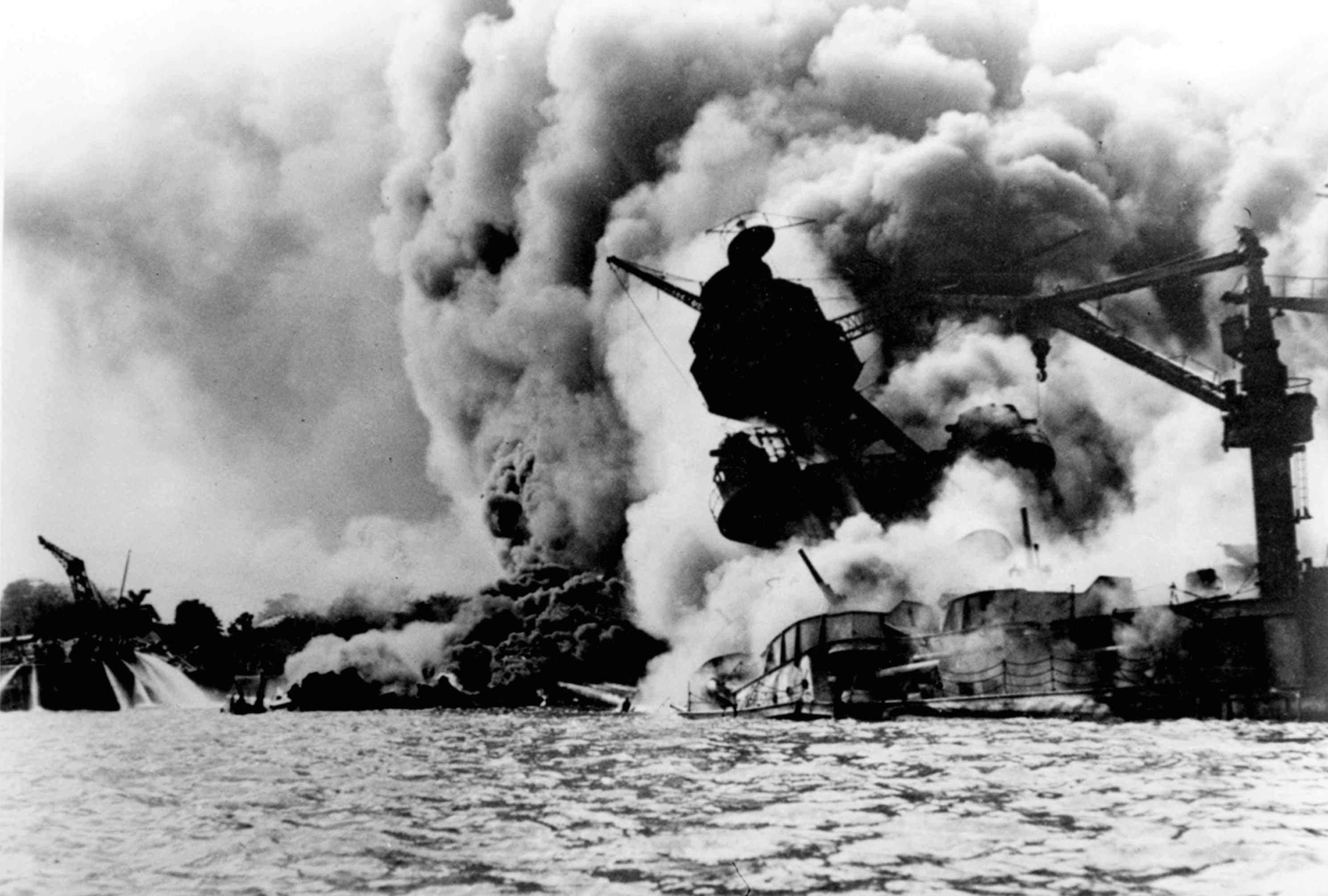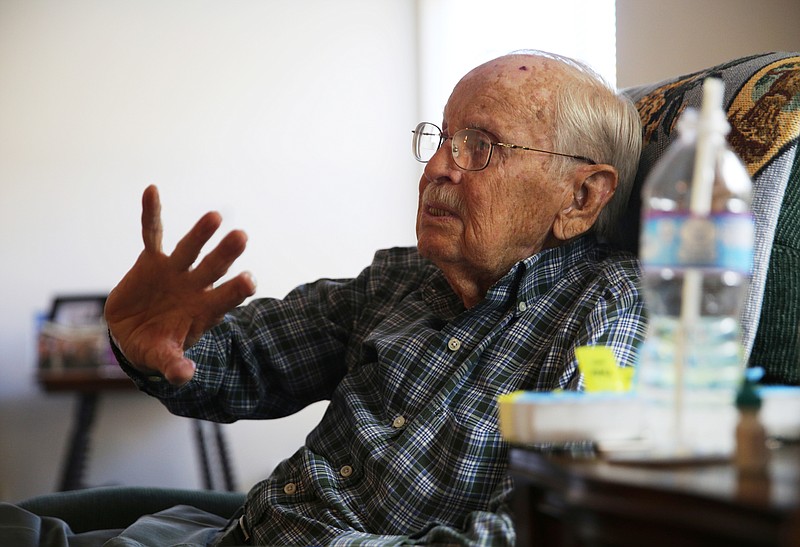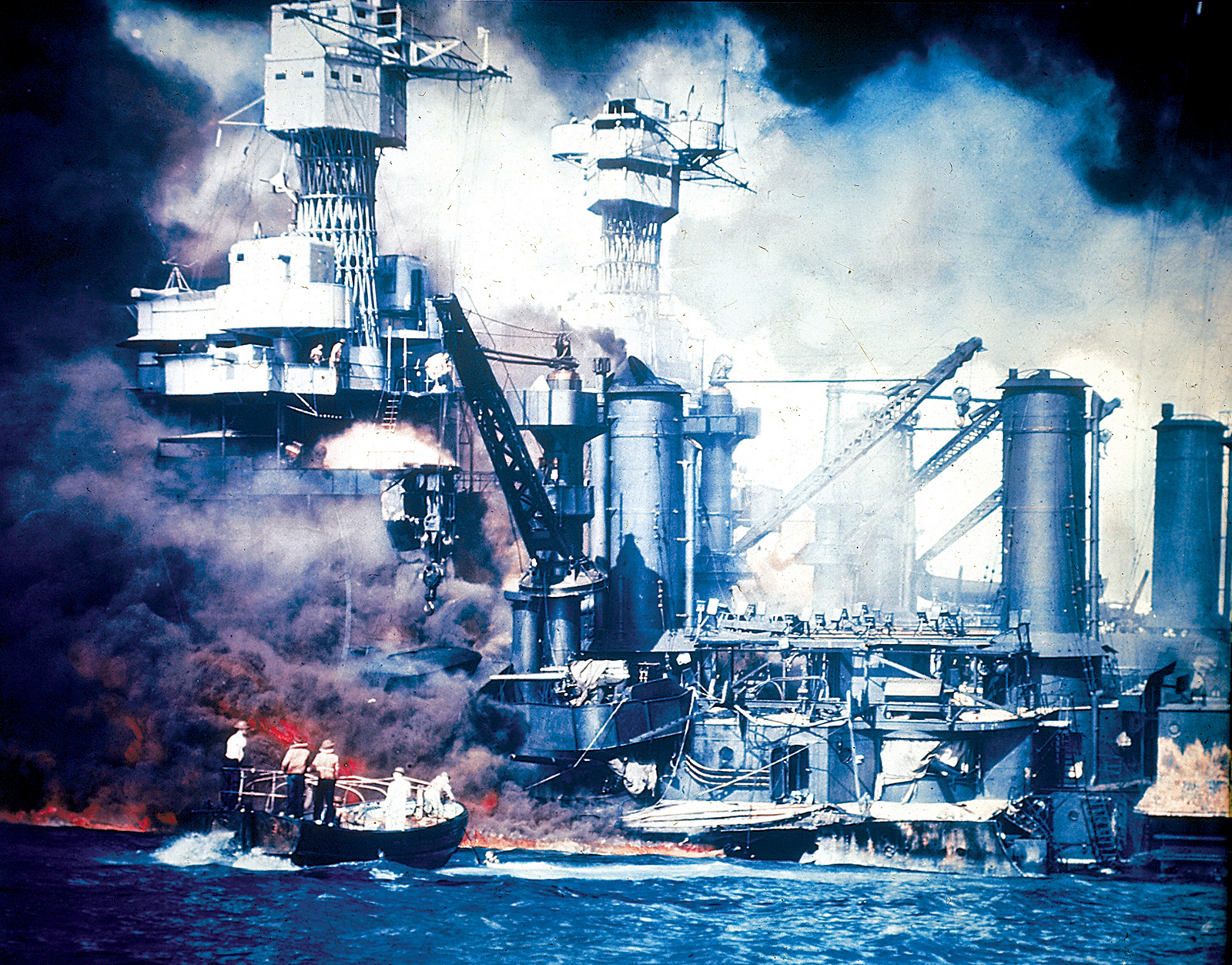I was so scared I didn't do too much thinking except thanking the Lord that he protected us.
On the morning the Imperial Japanese Navy Air Service attacked Pearl Harbor in 1941, Chattanoogan Hank Clark was enjoying the day on the deck of the USS Curtiss as it was coming in to dock.
The Japanese swept in just before 8 a.m. on Dec. 7, and in an instant the Hawaii naval base was a war zone.
"It was a horrible day, really and truly. We were sitting there just happy and enjoying ourselves when all of a sudden, we learned we were under attack," Clark said. "The Japanese planes were coming over and dropping bombs and strafing and everything."
The Curtiss did an about-face to get back into open water, where it would have room to maneuver. The crew scrambled to help repel the attack and Clark manned a quad 40 mm gun, firing on the planes dive-bombing docked ships.
"We got out to sea because we could protect ourselves there and actually move around," Clark said. "From there, we went after the Japanese. They of course turned and ran after they had done the damage. We shot down I forget how many planes."
"We had a kamikaze [pilot] that made a dive on the ship. We hit him and I could have reached out and touched the plane as it hit the water behind us. It came that close to us. If it had been another three feet over he would have gotten us."
The USS Curtiss was damaged in the attack but returned shortly after to assist in its aftermath. Clark said they came back to a scene of devastation, and he began to grapple with the scope of what had happened.
"I was so scared I didn't do too much thinking except thanking the Lord that he protected us," he said. "It was something that I want to remember, but yet I don't want to remember because of all the good men who are still there."
In the end, the attack left 2,403 Americans dead.
Thousands of miles away, Robert Millican, a Cleveland, Tenn., native who was then 17 years old, heard about the attack as he was driving home from a trip in Alabama with a friend. The pair stopped at a service station and came in to find a group of adults listening to reports of the attack coming in over the radio.
"They were talking to each other and I was just kind of listening in on the conversation. I made no comments because I didn't know what to say," Millican said. "They were talking about what a horrible time it was. They were very angry and they were saying what this country would do to [the Japanese], and it turned out they were right."
"I was a little scared because that was huge news. Something I had never heard before. I had never heard about Pearl Harbor and not much about the Japanese."
Six months later, as he learned more about the attack, he decided to enlist and signed on with the Marine Corps. He spent months serving as a rifle instructor on American bases before shipping out to fight in the Pacific. Millican was on Okinawa when the first atomic bomb was dropped, bringing a stuttering halt to the conflict.
"I wanted to go home. I was overseas for two years and they had no intention of sending us back up to that point," he said.
Others who signed up but were never plunged into the fight also remember exactly where they were when they learned of Pearl Harbor.
Wayne Shearer, who now lives in Hixson, was a senior in high school and riding in the car with his family when they heard the news.
"We were driving around after church on Sunday afternoon listening to the radio, and then all of a sudden there it was. It was on the radio that the [Japanese] had attacked us at Pearl Harbor, and most of us had no idea where Pearl Harbor was," he said. "My dad was a WWI veteran. He was driving the car, turned around and said, 'Wayne, you know what that means? and I said, 'Yes, sir. I'll do my part.'"
 FILE- In this Dec. 7, 1941 file photo provided by the U.S. Navy, the USS Arizona is pictured in flames after the Japanese attack on Pearl Harbor in Pearl Harbor, Hawaii. The attack sank four U.S. battleships and destroyed 188 U.S. planes. Another four battleships were damaged, along with three cruisers and three destroyers. More than 2,200 sailors, Marines and soldiers were killed. (AP Photo/U.S. Navy, File)
FILE- In this Dec. 7, 1941 file photo provided by the U.S. Navy, the USS Arizona is pictured in flames after the Japanese attack on Pearl Harbor in Pearl Harbor, Hawaii. The attack sank four U.S. battleships and destroyed 188 U.S. planes. Another four battleships were damaged, along with three cruisers and three destroyers. More than 2,200 sailors, Marines and soldiers were killed. (AP Photo/U.S. Navy, File)He and his classmates were corralled into the school auditorium the following day to listen to President Franklin D. Roosevelt's address in which he famously called the attack "a date which will live in infamy."
In the weeks after, Shearer's math teacher was called to serve.
"Gradually, the men in the faculty were called into active duty," he said.
"We had substitute teachers who filled in, but I know [Shearer's teacher] decided he would maybe help us all along in recess. He said, 'Anybody who would like to learn the left foot from the right foot, we'll march around the school at lunch, so a lot of us did.'"
Shearer enlisted, as did many of his classmates, but the war was winding down by the time he finished training as a pilot for the Army Air Forces. He said, though, that signing up was never a question for him or the young men he knew.
"We were looking forward to going. A couple of the fellas even volunteered when they were 17," he said. "They were just patriotic and they wanted to fight for their country."
Contact staff writer Emmett Gienapp at egienapp@timesfreepress.com or 423-757-6731. Follow him on Twitter @emmettgienapp.

